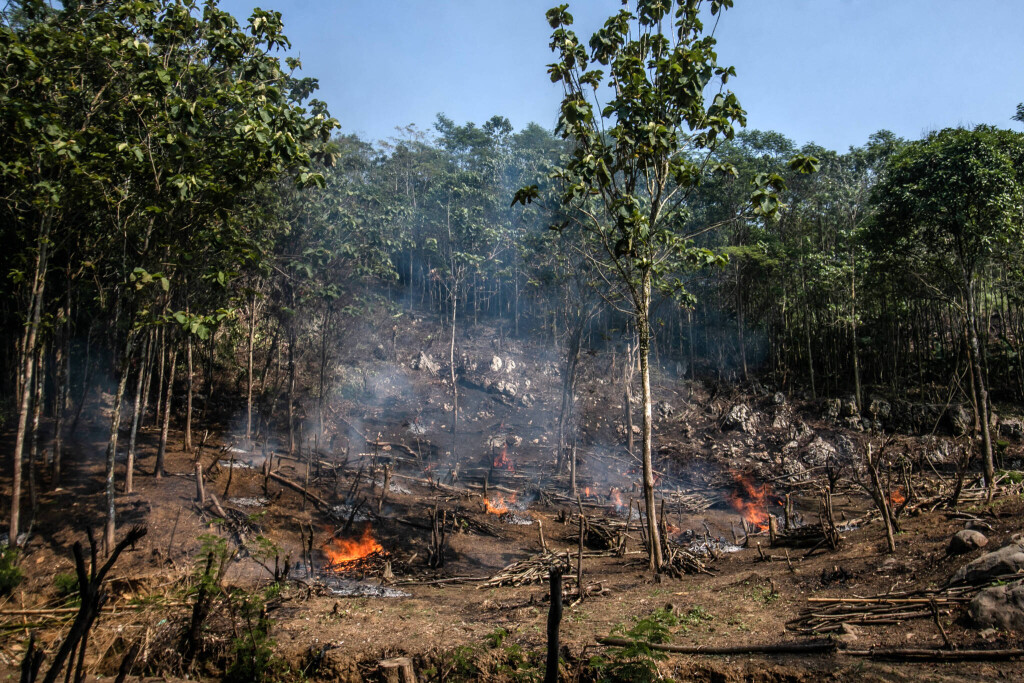How the World Bank aims to advance forest certificates

At COP28, the World Bank presents a roadmap for trading carbon certificates from forest protection. Incorrect accounting and other problems that have often occurred in the past are intended to be avoided. NGOs are skeptical.
The World Bank has unveiled plans at COP28 in Dubai to facilitate the growth of "high-integrity" global carbon markets. Trading on the market according to the new World Bank standards is set to begin next year. Fifteen countries participate in the "World Bank Engagement Roadmap for High-Integrity Carbon Markets" : Chile, Costa Rica, Ivory Coast, the Democratic Republic of Congo, the Dominican Republic, Fiji, Ghana, Guatemala, Indonesia, Laos, Madagascar, Mozambique, Nepal, the Republic of Congo and Vietnam. Their carbon certificates are intended to be generated through forest protection.
Through the trade of these certificates, "countries and communities blessed with natural resources, such as forests, could unlock millions or even billions of dollars in new income in the future," writes the Bank.
According to the initiative, more than 24 million certificates could already be issued next year. By 2028, the number could increase to 126 million. Assuming favorable market conditions, the certificates could generate up to 2.5 billion dollars in income, according to estimates by the Bank. "A large part of this could flow back to communities and countries."
Criticism of certificate trading
Trading in such forest protection certificates has come under heavy criticism in recent months because their climate impact is disputed. In several cases, research and studies have shown that much less CO2 was saved through forest protection than the papers had certified.
The effect can arise, for example, from unclear accounting rules. Moreover, it is not easy to determine how much deforestation would have occurred without a certified protection project. The accounting of carbon storage in the forest is complex. Sometimes, forest projects also lead to deforestation elsewhere. Their protective effect can be temporary – forest fires, for example, can quickly destroy the forest. It is also often criticized that the projects have negative impacts on indigenous and local communities.
World Bank emphasizes integrity of certificates
The World Bank wants to avoid this. It says its certificates are particularly integral for two reasons:
Regarding environmental impact: The World Bank wants to ensure that the certificates are issued and counted only once, based on a real foundation, and signify additional, permanent, and measurable climate action.
Regarding their social impacts: Indigenous and local communities should benefit particularly from the certificates.
Each certificate is to be audited and verified by a third party. The World Bank also wants to avoid that forest protection in one region leads to more deforestation elsewhere. Countries should be able to decide for themselves how to use their certificates, for example, for additional income or by incorporating the certificates into their national climate goals (NDCs). This is a clear reference to the Paris Climate Agreement.
Cautious and doubful NGOs
Gilles Dufrasne of the non-governmental organization Carbon Market Watch doubts that World Bank certificates are more effective than others : "I don't see why this initiative should be more trustworthy than others," he says. Despite the assurances, Dufrasne sees the danger that a large number of "junk credits" could be issued.
In reality, it is hardly possible to control all the problems surrounding forest certificates. Since there are so many uncertainties, "forest certificates are fundamentally unsuitable for compensating or quantifiable CO2 savings."
Nevertheless, he can understand that developing countries try to sell forest certificates: "Countries are desperately looking for financing options for forest protection," he says. It is a systemic failure that the money is not provided in another way.
Levi Sucre Romero, a member of the Bribri people from Costa Rica and coordinator of the Mesoamerican Alliance of Peoples and Forests, also expressed caution. "Whether we as indigenous peoples welcome this plan will depend on the conditions it formulates for the national REDD+ strategy," he said. In the case of Costa Rica, there is such a clear framework agreed upon between indigenous peoples and the government, but his country is an exception. In other countries participating in the roadmap, this is not yet the case. "Each people will have to decide for themselves." However, the rights of indigenous people must be preserved in any case.
Markets will likely grow
Article 6 of the Paris Climate Agreement provides for tradable emission reductions (Internationally Transferred Mitigation Outcomes, ITMOs) between states. This refers in particular to forest protection, often results from REDD+ programs are understood as such. Some details were agreed upon at COP26 in Glasgow. However, how exactly carbon markets under Article 6 are to be regulated overall is still not decided.
This is to be distinguished from voluntary carbon markets, where companies trade certificates to meet their self-set climate goals. The World Bank expects the carbon certificate market to grow. It anticipates that, especially in the beginning, voluntarily traded certificates will play a more significant role, among other things, because the infrastructure and institutions in many countries are not yet designed for trade under Article 6.
However, voluntary markets must meet strict rules, be well-controlled and transparent, according to the World Bank. Its roadmap is intended to help "unlock the potential".
The roadmap is based on the Forest Carbon Partnership Facility (FCPF), in which the World Bank has been advancing carbon markets together with governments and local communities since 2008. However, the FCPF is also frequently criticized for having few concrete results in forest protection.
Read all previously published texts on COP28 here.
Letzte Aktualisierung: 24. Juli 2025

